
Eleven investigators and teams were awarded grants in support of cancer research projects in the fall 2022 cycle of the UCSF Resource Allocation Program (RAP). Funded by various agencies across UCSF, the awards span a range of topics from targeting cell growth in pancreatic cancer to predicting head and neck radiotherapy toxicities to evaluating a digital health intervention in breast cancer patients.
RAP is a campus-wide program that bi-annually facilitates intramural research funding opportunities and seeds high-quality, high-impact, timely research. The program offers many benefits for investigators and campus agencies, including a single application, a streamlined review process, and access to funding that has a typical funding rate around 40 percent.
Read more about the recent awardees and their cancer research projects below.

Mirunalini Ravichandran, PhD
Postdoctoral Scholar, Anatomy, UCSF
Project: Targeting Iron Dependency to Overcome Therapy Resistance in Pancreatic Cancer
Award Mechanism: Mentored Scientist Award in Pancreas Cancer
Can you describe the focus of your project in a few sentences?
In this project, I am interested in investigating the mechanisms through which pancreatic ductal adenocarcinoma (PDA) cells maintain iron homeostasis following KRAS-MAPK pathway inhibition. In particular, I’m interested in understanding how PDA cells balance iron uptake versus recycling to maintain cellular homeostasis and in exploring the possibility that perturbing iron homeostasis may be a targetable vulnerability in response to KRAS pathway inhibition.
What motivated you to pursue this particular project? What do you find most exciting about this research?
We recently showed that PDA cells escape KRAS targeted therapy by increasing autophagy-dependent iron utilization. While iron is crucial for cellular growth, too much iron is toxic to the cells. This motivates me to investigate the molecular mechanisms through which PDA cells balance iron levels in the cells.
Identifying key molecular players that mediate increased iron availability is exciting as it uncovers new ways to tilt the balance towards toxicity to prevent therapy resistance and relapse, which are major problems for effective cancer treatment.

Eze Goldschmidt, MD, PhD
Assistant Professor of Neurological Surgery, UCSF
Project: Understanding Molecular Mechanisms Driving Meningioma Induced Hyperostosis
Award Mechanism: Under-represented Faculty in Clinical and Translational Research Awards
Can you describe the focus of your project in a few sentences?
The focus of our work is understanding how meningiomas, the most common tumors of the central nervous system, induce bone growth. Some meningiomas, named hyperostotic meningiomas, can make the normal skull bone grow abnormally, compressing the brain, nerves, and eyes. Frequently this bone overgrowth is the only reason a patient will present with symptoms such as severe pain and vision loss.
Our project aims to understand the genetic and molecular basis for this phenomenon, aiming to create a medical treatment for this patient population, and thus treating them without the need of surgery. In addition, our work will also provide information on the general mechanisms of bone growth, which is of great importance for conditions such as metastatic bone disease and osteoporosis.
What motivated you to pursue this particular project? What do you find most exciting about this research?
My motivation comes from my patients, from seeing how this understudied condition can have severe consequences on people's lives, and how little is known about it.
I'm excited about this field because it is completely unexplored; every step we take is a new one. I would like to mention my mentor Dr. Raleigh and my research partner Dr. Eaton who makes this possible.
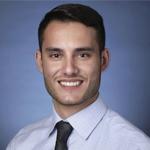
James Ford, MD
Clinical Fellow, Emergency Medicine, UCSF
Project: Combined Hepatitis B Virus and Hepatocellular Carcinoma Screening in the Emergency Department: A Multicenter Study
Award Mechanism: Global Cancer Pilot Award
Can you describe the focus of your project in a few sentences?
The hepatitis B virus (HBV) and hepatocellular carcinoma (HCC) epidemics have devastated sub-Saharan Africa. We are conducting a multicenter study in Tanzania to assess whether using the emergency department (ED) as a setting for combined HBV and HCC screening is logistically feasible and clinically useful. This model has the potential to serve as a model for HBV/HCC screening in resource-limited settings, which would dramatically expand public health services to affected patients in this high-endemicity region.
What motivated you to pursue this particular project? What do you find most exciting about this research?
I have always had a professional interest in hepatic disorders and global health. Tanzania is an ideal place to perform this research because of the high prevalence of HBV and HCC, and the existing collaborations between UCSF and local partner institutions. I am excited about this project because it represents a massive interdisciplinary undertaking that allows our team to utilize an innovative approach to address a pressing public health problem.

Hannah Leslie, PhD, MPH
Assistant Professor of Medicine, UCSF
Project: Design and Evaluation of the Effectiveness of a Digital Health Intervention to Improve Health Care and Outcomes for Breast Cancer Patients in Mexico
Award Mechanism: Global Cancer Pilot Award
Can you describe the focus of your project in a few sentences?
The purpose of the proposed project is to see if a web application paired with clinical guidance for nurses can help women in early stages of breast cancer treatment by addressing side effects and symptoms they experience. We will conduct the study with 50 women from the largest oncology hospital in the Mexican Institute of Social Security (IMSS) as a pilot to test the application and assess if it helps meet women’s needs for supportive care.
What motivated you to pursue this particular project? What do you find most exciting about this research?
The project was really started by my collaborator Dr. Svetlana Doubova at IMSS – she has been working to identify gaps in health care quality at IMSS and address them for many years. She and I have worked together on assessments of health care quality more broadly, and when she reached out to me about the study, it seemed like a wonderful opportunity to develop and test an intervention, hopefully as a first step towards broader testing and implementation within IMSS. IMSS provides healthcare to about half of the population of Mexico, so the potential for implementation is large! It’s been so interesting to get to know a bit more about the HDFCCC and especially the Global Cancer Program here at UCSF, especially exciting to learn about the active projects and how the different teams working internationally can share resources and advice to support each other.

Qinheng Zheng, PhD
Postdoctoral Scholar, Cellular and Molecular Pharmacology, UCSF
Project: Targeting Pancreatic Ductal Adenocarcinoma with Covalent K-Ras(G12D) Inhibitors
Award Mechanism: Mentored Scientist Award in Pancreas Cancer
Can you describe the focus of your project in a few sentences?
A single missense mutation in the KRAS gene, specifically Gly12 to Asp, is responsible for driving nearly 36% of all pancreatic cancer cases. My current focus is on developing small molecule inhibitors that target K-Ras(G12D), which was once considered undruggable. As an organic chemist, I leverage the atom-level differences between Gly and Asp to synthesize and have identified lead molecules that form covalent bonds with the carboxylic acid side chain of the acquired Asp12, resulting in mutant-selective inhibition. These molecules have been shown to potently inhibit the growth of cancer cell lines harboring KRASG12D mutation, but not non-G12D mutations. With the support of the UCSF Pancreas Center through a mentored scientist grant, I aim to further understand the therapeutic potential of this lead covalent G12D inhibitor in cell-line derived xenografts.
What motivated you to pursue this particular project? What do you find most exciting about this research?
The significance of targeting K-Ras(G12D) for drug development in pancreatic cancer cannot be overstated. Pancreatic cancer is one of the most deadly cancers, with an estimated 64,050 Americans projected to be diagnosed in 2023 and a five-year survival rate of only 12%. Currently, there are no FDA-approved targeted therapies available to treat this disease. The urgency for an effective drug is not only apparent in the statistics but also from the stories of real people, like KRAS Kickers. Racing against time, we are committed to the basic research that can make a difference in the lives of those affected by this devastating disease.
Although the Shokat lab's covalent approach for the K-Ras(G12C) mutation reignited hope, the carboxylic acid's chemical reactivity is not comparable to cysteine's thiol, making covalent inhibition of G12D challenging. The prospect of activating a dormant residue, Asp, for covalent reaction is incredibly exciting. And the excitement peaked when we discovered small molecules that could efficiently react with recombinant K-Ras(G12D) while sparing the wildtype, as confirmed by mass spectrometry. This bond-forming reaction depends on the occurrence of the oncogenically acquired Asp residue, demonstrating the potential of precision medicine.
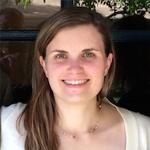
Joanna Kovalski, PhD
Postdoctoral Scholar, Urology, UCSF
Project: Regulating Oncogene Expression in Pancreas Cancer
Award Mechanism: Mentored Scientist Award in Pancreas Cancer
Can you describe the focus of your project in a few sentences?
My project focuses on understanding how pancreas cancer cells hijack normal stress responses in order to survive and proliferate. Specifically, I am studying how cancer cells selectively increase the protein expression of key driver oncogenes through a mechanism called translational control. We have identified new players that regulate the cancer selective translation of the central Myc oncogene. These RNA binding proteins represent an “Achilles heel” for tumor cells and present new ways to specifically target cancer cell growth.
What motivated you to pursue this particular project? What do you find most exciting about this research?
My interest in cancer biology stems back to my first research experience in high school through my PhD training in cancer biology and to my current postdoc research in the lab of Dr. Davide Ruggero. Translational control is a newly emerging field in cancer research. I am excited to unite what we are learning about how cancer cells selectively modulate their proteomes with the basic biology of pancreas cancer. With respect to this particular project, I have a personal connection, having lost a close family friend to pancreas cancer. Therefore, I am motivated to uncover new molecular mechanisms that may generate novel therapeutic opportunities for pancreas cancer.
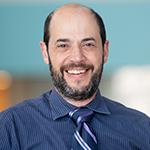
Scott Kogan, MD
Professor of Laboratory Medicine, UCSF
Project: Perinatal Cytomegalovirus Infection as an Etiological Factor for Childhood ALL
Award Mechanism: Pilot for Established Investigators
Can you describe the focus of your project in a few sentences?
Infections can increase risk of some cancers. Examples include chronic hepatitis C increasing risk of liver cancer, and HIV increasing risk of aggressive lymphoma. My colleagues and I are working to understand why most children who are born with genetic risks for acute leukemia remain healthy, whereas some develop this life-threatening and life-altering illness. In fact, acute leukemia is the most common childhood cancer, being diagnosed in approximately 4,000 children each year in the United States.
It is known that early daycare with early exposure to numerous common viruses is associated with protection from leukemia for some children, but other times and sources of childhood infections seem to increase risk of leukemia. We have learned that infection at birth with a common virus, CMV (cytomegalovirus, a virus of the herpes virus family), is associated with increased risk of acute leukemia.
The aim of our current project is to assess the hypothesis that perinatal infection with CMV is causal in this increased risk of leukemia by testing this idea in an animal model of childhood leukemia.
What motivated you to pursue this particular project? What do you find most exciting about this research?
If we can establish an experimental system in which CMV promotes the development of leukemia, this will make possible two future investigations. First, we will use this experimental animal model to test our current hypotheses, and develop new hypotheses, about how perinatal CMV puts children at increased risk for cancer. Second, we will develop and test hypotheses of how we can prevent leukemia in at-risk children.
Why am I excited about this work? We do not understand why some children with genetic risks of leukemia develop disease and others do not. We also do not understand the varied ways in which infection can increase or decrease risk of leukemia. This project has the potential to illuminate a piece of this complex biology and to test ways of preventing leukemia. Because acute leukemia is both relatively common and increasing in individuals of Hispanic ancestry, the work is especially relevant to populations that our cancer center serves in Northern California.
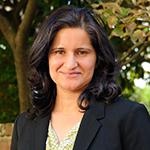
Manju Sharma, PhD
Assistant Professor of Radiology, UCSF
Project: Cone Beam CT Image Analysis to Predict Head and Neck Radiotherapy Toxicities for Adaptive Radiotherapy
Award Mechanism: Pilot for Early Career Investigators
Can you describe the focus of your project in a few sentences?
Head and neck (HN) radiotherapy poses a significant risk of toxicity due to the narrow therapeutic window between tumoricidal doses and the potential for normal tissue toxicities in the surrounding area. The resulting toxicity may result in adverse outcomes in patients, making it essential to implement interventions or adaptive replanning. While adaptive replanning is a technique that can reduce normal tissue toxicity, it requires a considerable investment of resources and time. Therefore, our current research is focused on identifying metrics from cone-beam computed tomography (CBCT) that can help us to identify patients who may benefit from early adaptive radiotherapy (ART) triggers to prevent the development of severe acute toxicity. Our innovative approach involves the correlation of highly resolved gammas with CT features, which could serve as a valuable predictive tool.
What motivated you to pursue this particular project? What do you find most exciting about this research?
In my experience as a medical physicist, I have frequently observed replanning in HN radiation treatment. Although it is a necessary aspect of radiation treatment, the frequency and urgency of replans can vary based on offline image review. The entire process, from identifying the need for a replan to its delivery, is time consuming and can significantly strain the clinical workflow. Therefore, I am enthusiastic about developing a user-friendly image-based predictor that can assist physicians in identifying suitable candidates and optimal timing for adaptive replanning. The tool will be designed to be simple enough for radiation therapists to use, enabling them to alert attending physicians in advance, ultimately leading to a more effective replanning process and better patient outcomes. The support and enthusiasm of my collaborators, Dr. Jason Chan, Dr. Ann Lazar, and Dr. Sue Yom, continue to motivate me in this endeavor.

Neil Shah, MD
Professor of Medicine, UCSF
Project: Identification and Validation of Oncogene-Specific Alterations on the Cell Surfaceome to Facilitate Novel Immunotherapeutic Approaches in Myeloid Malignancies
Award Mechanism: Pilot for Established Investigators
Can you describe the focus of your project in a few sentences?
Immunotherapeutic approaches hold considerable promise for cancer treatment, but their development for myeloid leukemias has been largely hampered by a lack of knowledge of potential target molecules that are differentially expressed on leukemia cells compared with their normal counterparts. We hypothesized that mutations that drive myeloid leukemias may impact the cell surface expression of potential immunotherapeutic targets. To identify such targets, we collaborated with Arun Wiita’s lab to define the constellation of proteins on the cell surface using an isogenic set of cell lines expressing various common myeloid leukemia-associated oncogenes. We have identified several candidate molecules, some of which are targeted by FDA-approved therapeutics for other indications. We are working to validate these findings using primary patient samples.
What motivated you to pursue this particular project? What do you find most exciting about this research?
This work has the potential to inform disease biology as well as to identify novel therapeutic approaches.
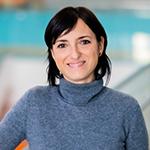
Emanuela Zacco, PhD
Specialist, Helen Diller Family Comprehensive Cancer Center, UCSF
Project: Expanding NanoString GeoMx Digital Spatial Profiling in the LCA-Genome Core Facility
Award Mechanism: Core Award for Research and Development (CARD)
Can you describe the focus of your project in a few sentences?
The Laboratory for Cell Analysis-Genome Core acquired the GeoMx Digital Spatial Profiler (DSP) system from NanoString Technologies in 2020, supported by an unprecedented interest from several UCSF departments. The DSP is a non-destructive, highly multiplexed, multi-omics technology that quantifies target proteins and transcripts in spatially defined areas of a microscopy slide. Thus, it allows cell type-specific analysis of frozen, paraffin embedded and FFPE tissues. Since its acquisition the LCA-genome has successfully carried out several transcriptomics and proteomics experiments across tissue types using validated workflows; the DSP has proven to be an invaluable tool for characterizing tissue heterogeneity in the areas of immune-oncology, neuroscience, autoimmune, and infectious diseases.
The awarded CARD grant will allow the LCA-Genome to expand the Core's expertise and user support by incorporating new services as described in three following aims: (1) Implement a new GeoMx application, proteogenomics, in which selected RNAs and proteins are detected on a single FFPE slide. (2) Combine RNAscope technology with the Nanostring workflow to base ROI selection on gene expression, visualized at the single-cell level. (3) Deploy the Nanostring barcoding conjugation kit for antibodies to offer affordable custom spatial proteomics to users.
What motivated you to pursue this particular project? What do you find most exciting about this research?
The field of spatially resolved biology and multiplex technologies have redefined approaches to complex biological questions pertaining to tissue heterogeneity, tumor microenvironments, cellular interactions, cellular diversity, and therapeutic responses. We think it is crucial to expand upon GeoMx DSP capabilities and offer novel and expanded services which will allow users to carry out tailored projects and better serve the needs of a diverse research community. Each aim proposed in our CARD application has tremendous advantages; the newest proteogenomics workflow will save on precious biological samples available in only limited quantities and will allow control of transcription, translation, and protein turnover with extreme precision avoiding section-to-section variability; the RNAscope base ROI selection will allow visualization of the gene expression of interest at the single-cell level with extremely high sensitivity, specificity, and flexibility. Custom proteomic experiments will be available more cost efficiently.

David Toczyski, PhD
Professor, Helen Diller Family Comprehensive Cancer Center, UCSF
Project: Exploring the role of the CUL5-WSB2 complex in downregulating apoptosis
Award Mechanism: Pilot for Established Investigators